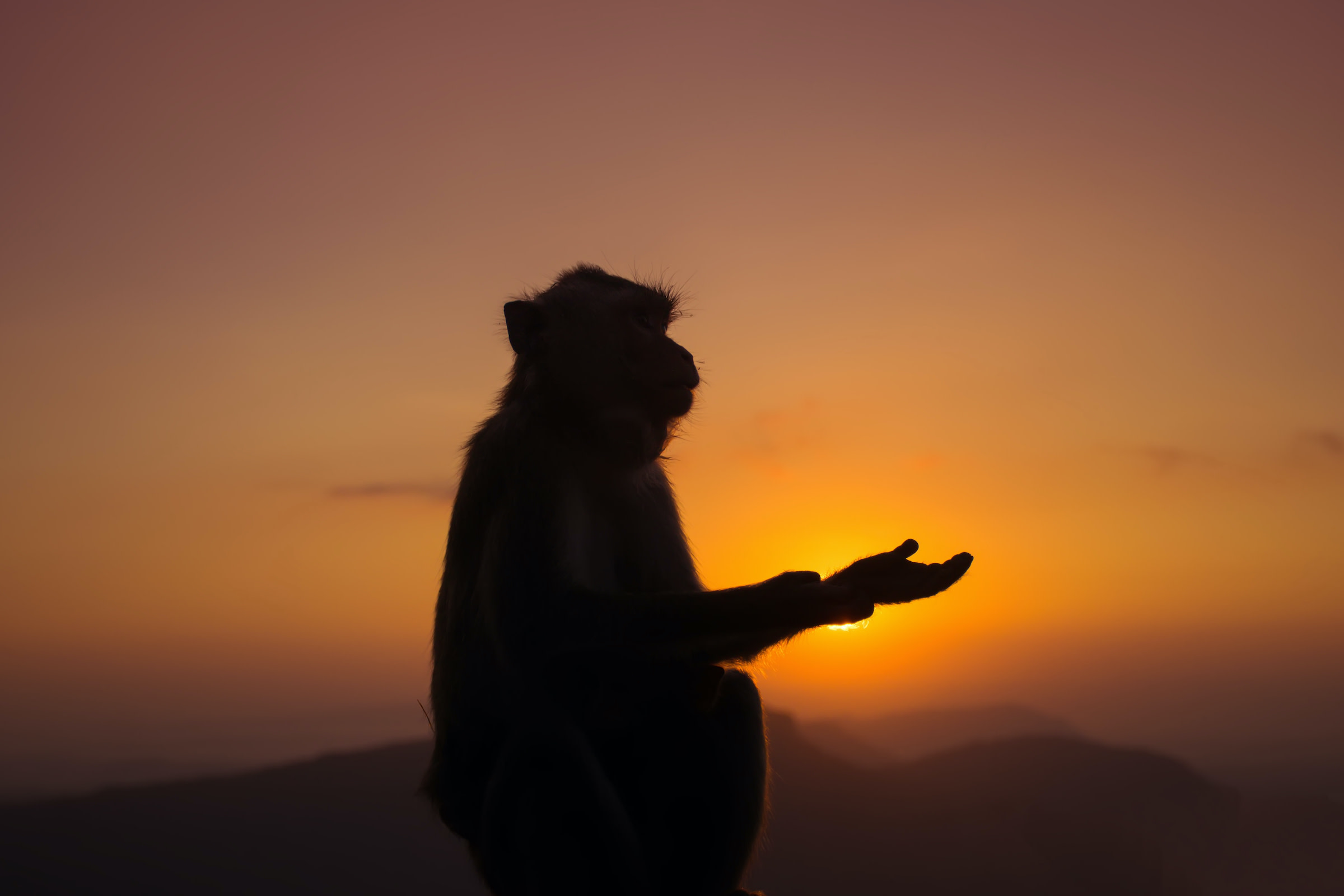 Listen to this article
•
15:34 min
Listen to this article
•
15:34 min
Troops of bonnet macaques take position on either side of the tarmac as soon as the morning traffic picks up. The road from my home to the nearest shops winds through two kilometres of forest. But the simians turn their noses up at the wholesome jungle fare of fruits and insects, and instead wait for passing motorists to feed them deep-fried savoury and sweet snacks.
Some people, who leave their homes early for work, sit under shady trees to have their breakfast. Soon the monkeys materialise around them, sitting upright on their haunches and watching intently as if trying to fathom the humans’ next move. Would any leftovers be forthcoming? These primates don’t snatch, bully, or bite people unlike the emboldened members of the species elsewhere in the country. Not yet anyway. The many pairs of eyes pinned on the humans are the only pressure. Invariably, people succumb to the silent entreaties they read in the macaques’ eyes. By mid-morning, the sated monkeys disappear into the forest. Perhaps they lounge in the cool shade with nothing to do except count down the hours and then minutes to the evening session when returning motorists will take pity on them again. It seems like an easy life.

Cover Photo: Juvenile bonnet macaques make eye contact with humans carrying food and stretch out their hands with palms facing up, the universal gesture of “give me”. Cover Photo: CHOTE BKK/Shutterstock
Across the Indian peninsula, similar scenes play out at temples, tourist sites, and forest roads. At the busy visitor information centre at Bandipur National Park, Karnataka, people mill around the restaurants and shacks, buying snacks, candies, and beverages. Opportunistic bonnet macaques eye the goodies. Humans taken in by the adorable large-eyed monkey babies readily feed their mothers. Some of the hefty alpha males bide their time before snatching food out of people’s hands. Or, they make threatening faces until people throw down their snacks in fear.
Too old to be cute and too young to have brawn, the juveniles look for ways to separate the treats from their owners. In this endeavour, they have adopted an ingenious method of communicating with humans. They stare at the person carrying food, as if willing them to look at them. If the person doesn’t notice or turns away, the monkeys walk around until they are face-to-face again. They make a “cooo…cooo” sound, like birds, in a discrete effort to attract attention. They call only when the person is facing them and not when their target’s body is turned away. Once they make eye contact, they stretch out their hands with palms facing up, the universal gesture of “give me”.
When young bonnet macaques are lost in the woods and out of sight of their troop, they make a two-note call: a plaintive “coo” followed by a high-pitched wail. The juveniles of the Bandipur troops have adapted the first part of this cry and put it to use in a new context: to draw the attention of humans. Extending the hands is a gesture this species doesn’t use in any other context.
No other wild animal, primate or otherwise, has evolved a specialised sound and gesture sequence to communicate with another species, say the researchers. Chimpanzees grimace, wolves bare their teeth, and tigers growl to express their displeasure. But they aren’t doing anything new. They employ the same body and vocal language with members of their species or any other. Even human beings who pride themselves on the complexity of their language skills say the same words to their pet dogs as they do to their children.
“The evolution of this sequence [of monkey gestures] is possibly driven by an imperative for survival that we humans have never experienced,” says Anindya Sinha, of the National Institute of Advanced Studies, Bangalore, and one of the researchers who first discovered this unique communication. The bonnet macaques of Bandipur, however, are phenomenal in adopting a unique new way of communicating. They don’t use the hand gesture to ask for anything from their fellow troop members. They use this repertoire only with humans, specifically those carrying food. Remarkably, these disparate actions, aligning themselves, calling attention, making eye contact, and putting out their hands, came together in this population without being learned from humans. When they reach out to take tidbits offered by humans, the positive reinforcement may have led to the evolution of the hand-out palm-up gesture, says Sinha.
Since indigent people use this gesture to seek handouts, it’s easy to assume the primates are doing the same thing. “They are not begging but requesting,” Sinha is quick to assert. He makes this distinction because humans are not the macaques’ last resort. The monkeys have the option of scrounging in the nearby jungle, but junk food is much tastier and easier to obtain.

Photo: M D Madhusudan
During Sinha’s study, tourists chased away these trendsetting monkeys on most occasions. Less than 40 per cent of the primate requests were successful.In those instances when they received what they wanted, the youngsters bounded off to dig into their booty. In 6 per cent of the cases, they resorted to an age-old strategy. When their human targets were distracted, they ran away with any unattended packets.
The macaques on my road know how to make eye contact. Will they independently evolve a way of asking for food? Since everyone who stops invariably feeds them, they have no incentive to be enterprising. I’m waiting to see them flag down vehicles.
Public service advice: Please do NOT feed macaques or any other wild animals.






